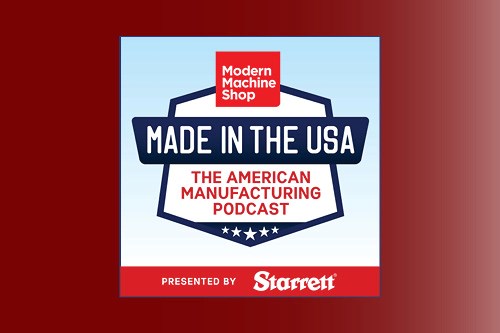An American Manufacturing Story
For manufacturers that choose to move or keep production in the United States, what are the challenges and opportunities that motivate them?

The central charge of the Federal Trade Commission (FTC) is to protect American consumers and the public at large from deceptive business practices, including but not limited to “unfair methods of competition,” according to the agency’s mission statement. One of those deceptive practices involves companies that claim to make or sell products that are “Made in the USA” when, in fact, they are not. A recent survey by the Reshoring Institute found that nearly 70% of Americans say they prefer and would pay up to 20% more for American-made products. Given that Americans have repeatedly stated their preference for domestically produced goods, the FTC’s battle against this deceptive practice is a serious and monumental task.
With the stakes so high, you might assume that the FTC’s written requirement for what constitutes an American-made product would be less squishy than it is. The agency’s standards for unqualified “Made in the USA” claims are as follows:
“For a product to be called Made in USA, or claimed to be of domestic origin without qualifications or limits on the claim, the product must be ‘all or virtually all’ made in the U.S… ‘All or virtually all’ means that all significant parts and processing that go into the product must be of U.S. origin. That is, the product should contain no — or negligible — foreign content.”
It should be noted that the FTC does not proactively investigate potentially false claims. The agency relies on consumers to report suspected violations, and there is a healthy market for the litigiously minded who suspect a company of being in violation of the standard.
Intentional Choices
When it comes to the metalworking universe of Modern Machine Shop, you may be aware that the United States used to be the number one producer of machine tools in the world. Readers may also be aware that, while that status has slipped a couple of notches over the past few decades, the country is in a positive rebuilding period — not just for machine tool production, but for the manufacturing sector at large and its contribution to the nation’s GDP.
“The motives to produce in the U.S. span from tradition and patriotism to intellectual property theft and supply chain issues.”
These are the topics that colleague Peter Zelinski and I have been investigating as part of our “Made in the USA” series — a documentary-style podcast series that began publishing its second season of episodes in late January. Season one took a deep dive into major events and topics that shaped U.S. manufacturing and metalworking from the late ’90s to today, including the loss of manufacturing jobs in the early 2000s, myths and truths about machine tool automation, the coming “silver tsunami,” a way forward for manufacturing, and several other topics.
The new season of the show has a different focus. Today we are focused on a simple question: What do we mean when we say that something is made in the USA? Specifically, what are the intentional choices that machine shops and machine tool OEMs make so they can keep production in or move production back to the United States?
The answer has nothing to do with FTC regulations, which are important and necessary. The deeper answers are varied and much more human. The motives to produce in the U.S. when cheaper options may be available span from tradition and patriotism to intellectual property theft and supply chain issues. On the latter topic, COVID-19 reshaped and informed our understanding about supply chains and the importance of keeping them as tight and close as possible.
Last year, we traveled to Hardinge’s production facility in Elmira, New York, and witnessed Taiwanese Hardinge employees teaching American employees how to build new models of machine tools. They used translation apps on their phones to communicate and generally seemed to be enjoying themselves and making fast progress. To make this moment possible, the company had to refine and execute a years-long strategic plan to shift production, or “repatriate,” two of its major product lines from its Taiwan plant to the United States. We talked to several executives and senior staff at the company to learn how they formulated the plan. We asked about challenges along the way and the rewards that made it worth the effort.
A related example: If a global company based in the United States operates a major production facility in China, does it necessarily mean the company is sacrificing American jobs for lower wages? The answer is no, and the question itself assumes that China is a “low-cost” option to produce American goods, which for many industries in 2023 is a dubious claim at best.
If you are interested in these topics — the motives behind moving or keeping production here, and the challenges and opportunities facing the U.S. metalworking industry — I invite you to listen to the new season of “Made in the USA.” If you have feedback or suggestions, please email me at bdonaldson@mmsonline.com.
Read Next
The Cut Scene: The Finer Details of Large-Format Machining
Small details and features can have an outsized impact on large parts, such as Barbco’s collapsible utility drill head.
Read More3 Mistakes That Cause CNC Programs to Fail
Despite enhancements to manufacturing technology, there are still issues today that can cause programs to fail. These failures can cause lost time, scrapped parts, damaged machines and even injured operators.
Read More













.png;maxWidth=300;quality=90)





